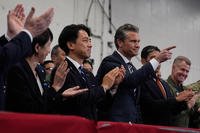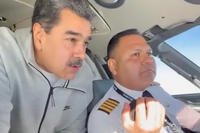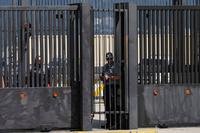This Washington Post Magazine story, on "The Bomb Squad," is one of the best reads you'll get in the mainstream press on the reality of the counter-bomb fight in Iraq. There's only one, teeny-tiny problem with the piece: It's not really about a "bomb squad," or explosive ordnance disposal (EOD) unit, at all. Nobody is asked to defuse any bombs. Instead, the story centers around what appears to be a group of combat engineers -- EOD's blood rivals. These guys go combing roads for improvised explosives and, if they have any brains at all, call in EOD once the bombs are found.
There's only one, teeny-tiny problem with the piece: It's not really about a "bomb squad," or explosive ordnance disposal (EOD) unit, at all. Nobody is asked to defuse any bombs. Instead, the story centers around what appears to be a group of combat engineers -- EOD's blood rivals. These guys go combing roads for improvised explosives and, if they have any brains at all, call in EOD once the bombs are found.
In either case, the story is well worth checking out. Here's a snippet:
And this is where the whole expedition turns . . . well, into a "Wizard of Oz" moment for me. Because as I peer through the haze of the Iraqi noon, the Buffalo's claw ponderously raking the grass beside the road, I realize that the heart of the Pentagon's program for defeating IEDs [improvised explosive devices] is: 1) buy some armored trucks with big windows; 2) send young soldiers out to drive up next to bombs; 3) investigate with a phone truck [which is what the author says the Buffalo reminds him of].
As Tate points out later: "I've seen tanks destroyed. I've seen Bradleys destroyed . . . There's only so much armor can do."
Fortunately, this particular wired rock turns out to be an irrigation pump. After another hour or so, I'm dropped off at a nearby patrol base.
Fifteen minutes later, Tate's RG-31 nearly runs over an IED.
McGorvin -- dubbed "the Jedi master" by his fellow soldiers for his ability to, as they put it, "detect ordnance" -- tells me about it the next day as he fidgets on a torn couch behind the TOC. He explains that he sensed the bomb a mile before he reached it -- noticing first the grinning face of a taxi driver who squatted down behind his cab to key a Motorola phone. A few minutes later as the convoy rumbled through a small town, McGorvin felt it again outside a cluster of mud wattle shacks, their yards suspiciously empty.
Then, all at once, his RG-31 passed a mound of dirt with a cone of rusty metal showing through its side. McGorvin's gaze locked on a sliver of blue plastic tucked behind the mound. "I got something!" he yelled. "I don't know what it is, but it's got a cellphone on it!"
The RG-31's armor wouldn't protect McGorvin standing in his gunner's nest, so, as radios barked and the convoy scattered, he tucked his thighs against his chest and squatted.
"McGorvin -- good looking," Tate shouted as their truck finally jolted to a stop outside the bomb's blast radius.








